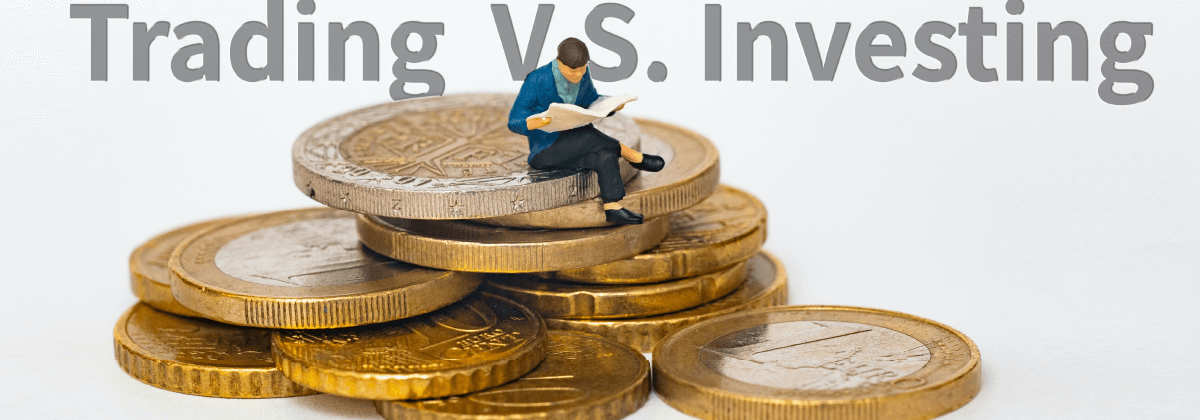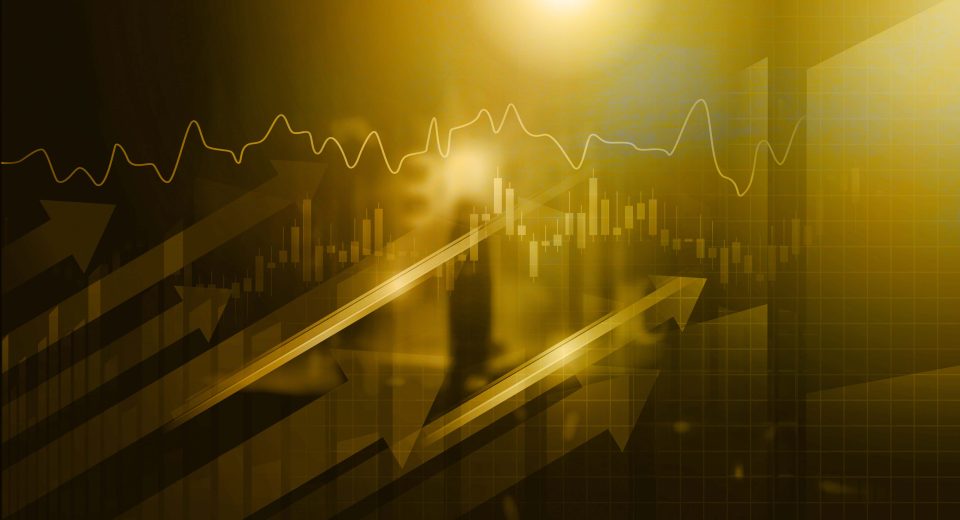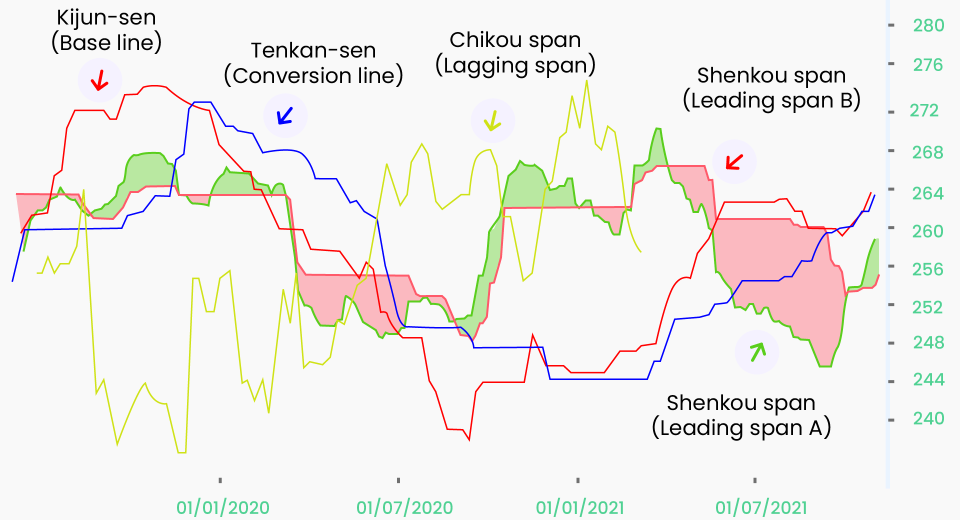Trading vs. Investing: What is The Difference?

The free market economic system allows entities and individuals to take advantage of opportunities presented by equities, debt securities, derivatives and currencies by strategically buying and selling such financial instruments. Trading and investing are the two ways to do so. But trading and investing aren’t the same thing. Here’s a look at how the two differ and some similarities.
Investing vs. Trading
Buying and holding instruments, such as shares, bonds and mutual funds, over a long period ranging from a few months to a few years, with the goal of building wealth over time, is called investing.
On the other hand, trading is buying and selling financial instruments, such as indices, currencies, commodities, etc., directly or via CFDs, futures or options, in the short- to medium-term. This could be a matter of minutes, or a few days or weeks.
How Does Investing Differ from Trading?
Both are ways to take advantage of compounding profits and interests over time to beat inflation. Here’s how they differ.
Risks Involved
Multiple ups and downs over the long run, help mitigate or at least minimise risks of investing. This is because over longer timeframes, short-term volatility gets smoothened out. Traders, on the other hand, understand and accept the risks of buying and selling during periods of high volatility to maximise their profit potential. Traders use measures, such as stop loss and take profits, to mitigate short-term price fluctuation risks.
Risk is an inherent part of the financial markets. Traders take risks every day with a small amount of capital, while investors risk a larger amount for a longer time.
Capital Growth
Investors have to wait patiently through high volatility periods, ignoring short-term profits or losses in terms of asset value. They eventually accrue profits that have compounded over time. The longer time horizon also allows them to enjoy other perks, such as dividends. Trading, on the other hand, involves attempting to make several quick, albeit small, gains during volatile markets.
Both trading and investing aim at capital growth. However, with trading, the growth is visible within days or weeks, while investments show results over the years.
Timing
Investing is not as time critical as trading. Since investors enjoy the benefits of compounding in the long term, they can take their time in ensuring optimal analysis for informed investment decisions. Traders, however, need to make quick decisions and time their entries and exits to ensure profits. In addition, investors make decisions once in a while because they hold on to their assets for months or years. Traders might even make multiple investment decisions within a single day, especially if they are scalpers.
Therefore, trading requires staying current with the market news to ensure quick analysis and rapid decision-making. Conversely, investing is all about carefully choosing the right asset to meet your financial targets in the long run.
Analysis
Investment aims at long-term growth. Therefore, fundamental analysis of a business, its potential to grow over the investment duration, and the strengths of the team leading the project backing the assets are paramount. For trading, price charts and technical indicators are used to identify the direction of price movement for the trade duration. Traders work on developing and perfecting their strategies and technical analysis skills to maximise their chances of profits. Additionally, traders keep an eye on daily economic data releases, calendar events and news updates to discover trading opportunities.
Investment is the art of identifying hidden gems and staying committed to them while trading is more time sensitive.
Consistency and Effort
Investment in a specific asset is typically a one-off action where investors analyse the fundamentals of the asset, put in considerable capital, and leave it to brew profits. Traders have to actively look for and take advantage of opportunities with tiny positions every day to ensure the growth of their portfolios over the long term.
Therefore, trading is more active and dynamic, while investing is more passive.
Market Conditions
Investment relies on the “buy low, sell high” principle. Therefore, investors buy during bear markets or when the asset is new and has not yet received enough attention to make its price rise. Investors are dependent on bull runs for asset price gains. Traders, on the other hand, can take advantage of both bear and bull markets by trading indices, commodities or forex via derivative instruments, such as CFDs. CFD trading also gives them the opportunity to use leverage to enhance market exposure which is useful if they have limited funds. Though the use of leverage also increases the risks of trading.
So, while bear markets are a bane for investors, traders can attempt to earn profits even in declining markets.
Planning
Investors plan for long-term or major life goals, such as retirement, paying for children’s education, vacations, etc. They buy, sell or hold when the market registers prolonged stagnancy, otherwise they ignore the ups and downs and focus on their goals. On the other hand, traders must tweak their strategy often and realign their portfolios regularly to sustain growth, based on the market conditions, their level of diversification and their performance. Additionally, they may have to pay taxes more often and in higher proportions than investors.
Trading requires planning every day to take advantage of the markets and staying prepared for any news or event that may move the markets. Investing, on the other hand, requires allocating capital once to a specific asset and then waiting out the investment timeframe.
Which One Should You Choose?
The choice will really depend on your risk appetite, patience and financial goals. It will also depend on how much time you wish to allocate to market-related activities. Traders tend to have a higher potential to outperform the markets, albeit at higher risk than investing. Investment returns generally align with the overall market performance.
In short, the risk involved, the strategies applied, and the returns vary for the two avenues to build wealth. Here’s a comparison snapshot of the two:
| Trading | Investing | |
| Duration | Few hours to few weeks | Few months to few years |
| Analysis | Technical analysis using indicators to generate signals based on price movement charts | Fundamental analysis, focused on business fundamentals and annual reports |
| Risks | Traders take frequent short term risks, making trading riskier | Risks are spread over the long term and short-term volatility is smoothened out |
| Targets | Small daily profits via multiple positions | Gradual compounding over the holding duration |
| Market Direction | Can take advantage of both rising and falling markets | Relies on the eventual growth of assets in the long run |
| Timing | Traders time entry and exit positions carefully, based on indicators and signals | Investors enter when the price is low and exit when the asset price moves up, significantly underperforms or when they need capital for an emergency. |
| Entry Signal | Volatility + technical indicators | Strong fundamentals |
Disclaimer:
All data, information and materials are published and provided “as is” solely for informational purposes only, and is not intended nor should be considered, in any way, as investment advice, recommendations, and/or suggestions for performing any actions with financial instruments. The information and opinions presented do not take into account any particular individual’s investment objectives, financial situation or needs, and hence does not constitute as an advice or a recommendation with respect to any investment product. All investors should seek advice from certified financial advisors based on their unique situation before making any investment decisions in accordance to their personal risk appetite. Blackwell Global endeavours to ensure that the information provided is complete and correct, but make no representation as to the actuality, accuracy or completeness of the information. Information, data and opinions may change without notice and Blackwell Global is not obliged to update on the changes. The opinions and views expressed are solely those of the authors and analysts and do not necessarily represent that of Blackwell Global or its management, shareholders, and affiliates. Any projections or views of the market provided may not prove to be accurate. Past performance is not necessarily an indicative of future performance. Blackwell Global assumes no liability for any loss arising directly or indirectly from use of or reliance on such information herein contained. Reproduction of this information, in whole or in part, is not permitted.




